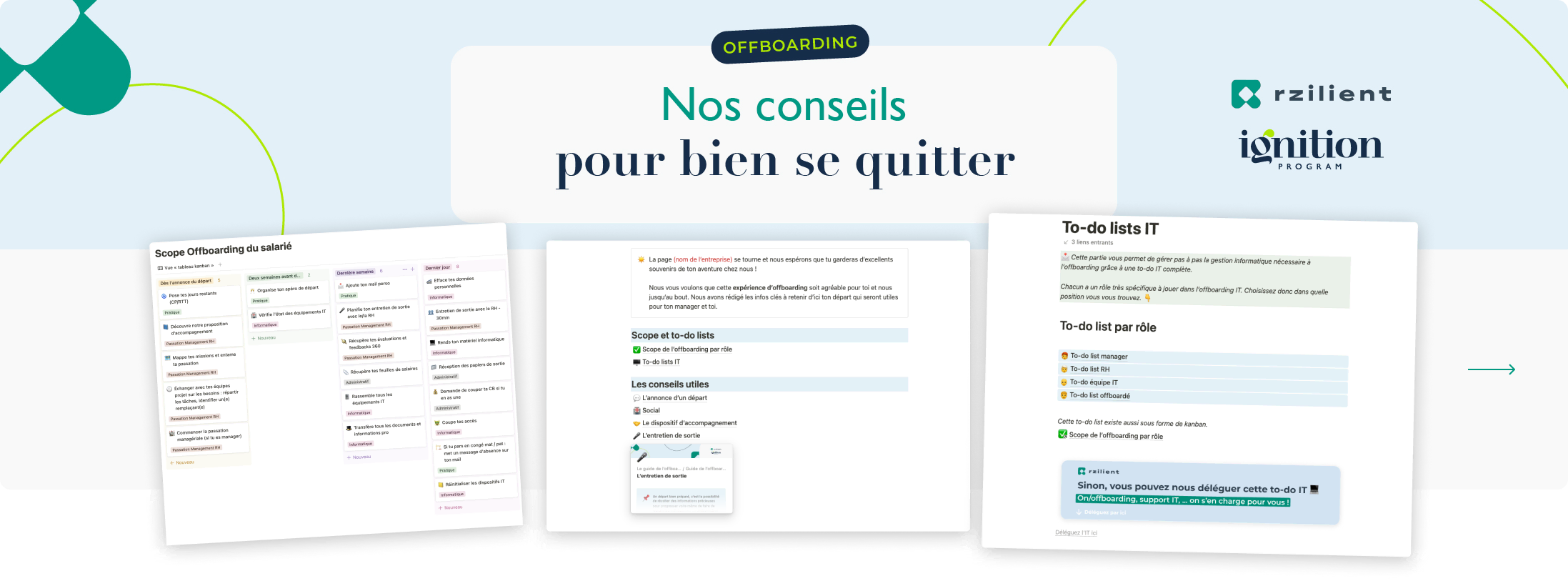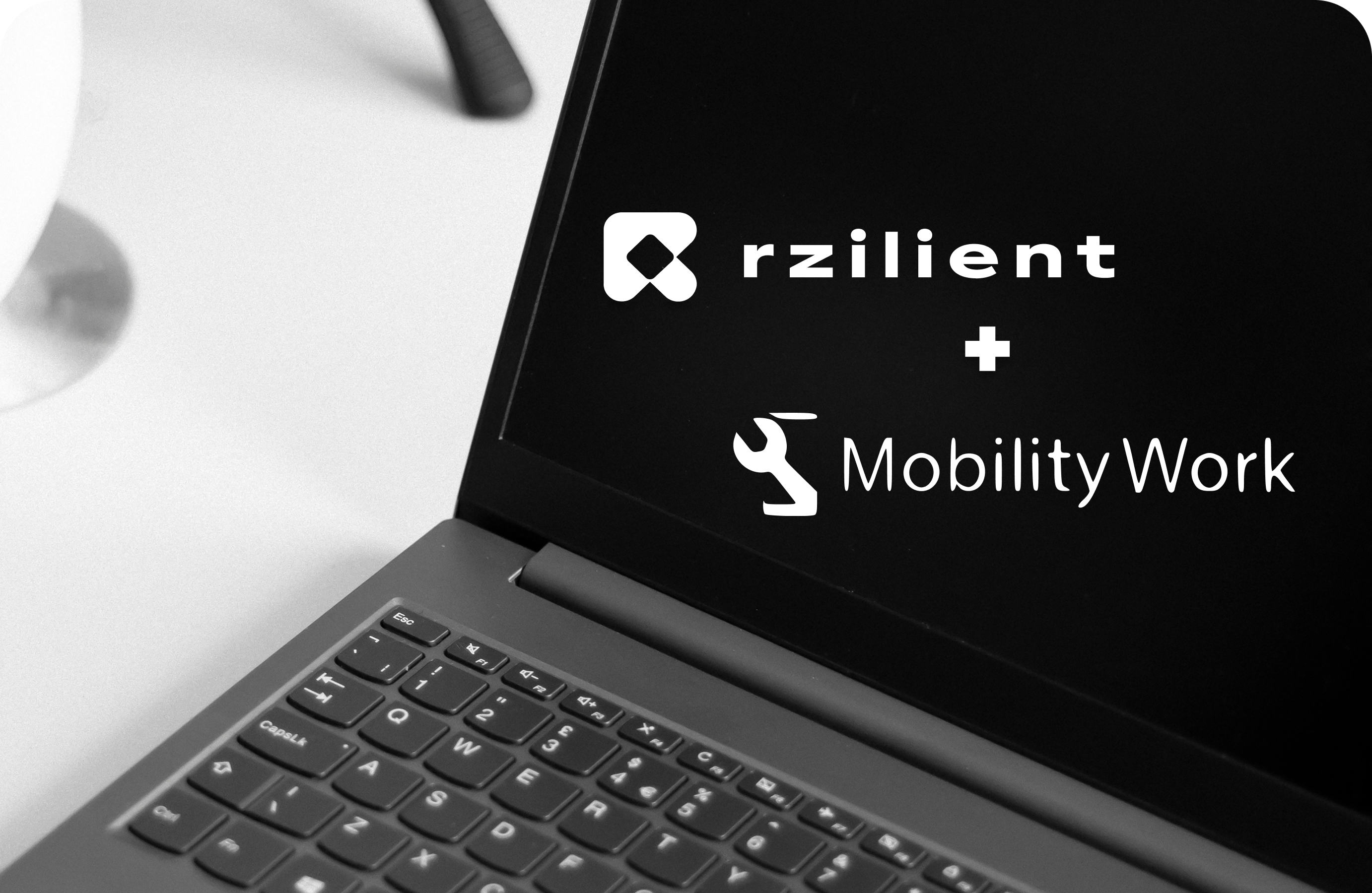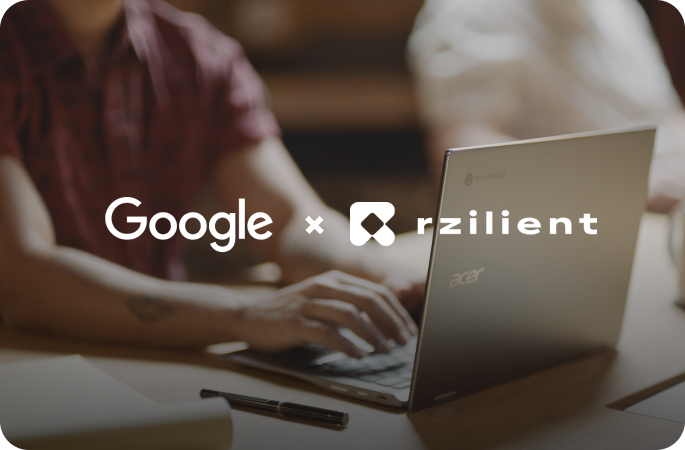Comment reprendre en main l’offboarding RH & IT ?

Profitez d'un support IT efficace
Découvrez notre solution tout-en-un
Le processus le plus sous coté et le plus cruciale
L’offboarding, ou le processus de départ d’un employé, est souvent sous-estimé mais il est en réalité crucial pour les entreprises. Que ce soit suite à une démission, une retraite, un licenciement ou une mutation, un départ mal géré peut avoir des conséquences négatives tant pour l’employé que pour l’entreprise. Un offboarding bien orchestré permet de minimiser les impacts négatifs et de garantir une transition en douceur.
Selon une étude, un quart des employés conservent l'accès aux données de leur ancien employeur, et 87 % d'entre eux avouent emporter des données qu'ils ont créées. Par ailleurs, 28 % des employés emportent des données créées par d'autres. Ces chiffres soulignent l'importance d'un processus d'offboarding structuré pour prévenir les risques de sécurité, protéger les informations sensibles de l'entreprise, mais aussi pour soigner sa marque employeur !
C'est pourquoi nous vous avons créé un document Notion avec tout le processus d'offboarding activable. Le template est à télécharger en remplissant le formulaire sur la droite de l'écran 👌

Qui sont les parties prenantes de l’offboarding ?
L’offboarding implique plusieurs acteurs clés au sein de l’entreprise :
- Les Ressources Humaines (RH) : Elles gèrent le processus administratif, préparent les documents nécessaires et s’assurent que toutes les obligations légales sont respectées.
- Le département IT : Il doit révoquer les accès de l’employé aux systèmes informatiques, récupérer le matériel de l’entreprise et sécuriser les données.
- Les managers directs : Ils facilitent le transfert des connaissances et des tâches en cours.
- Les collègues : Ils peuvent jouer un rôle dans la continuité des projets et l'intégration des remplaçants.
- L’employé sortant : Il doit collaborer avec les RH et le département IT pour une transition en douceur.
Comment performer sur votre processus d’offboarding en tant que RH ?
Pour réussir votre processus d’offboarding en tant que responsable des ressources humaines, voici quelques bonnes pratiques à adopter :
- Préparation et Communication
- Informer l’employé : Expliquez clairement les étapes du processus d’offboarding. Que ce soit par une discussion informelle ou une lettre formelle, assurez-vous que l’employé comprend ce qui va se passer.
- Préparer les documents nécessaires : Rassemblez tous les documents pertinents, tels que les informations sur la pension, les accords de non-concurrence, les accords de non-divulgation, et les documents fiscaux.
- Transfert des connaissances
- Coordination avec le manager : Assurez-vous que le manager direct de l’employé sortant organise un transfert de connaissances complet. Cela inclut la transmission des contacts importants, des ressources utiles, des rapports d'avancement des tâches en cours, et des listes de tâches en suspens.
- Documentation : Encouragez l’employé sortant à documenter ses processus et ses projets pour faciliter la reprise par son successeur.
- Récupération des biens de l’entreprise
- Inventaire des actifs : Faites une liste des biens fournis à l’employé (ordinateurs, téléphones, cartes d’accès, etc.) et assurez-vous que tout est retourné en bon état.
- Vérification IT : Assurez-vous que le département IT révoque tous les accès de l’employé aux systèmes informatiques de l’entreprise, y compris les accès à distance.
- Entretien de sortie
- Feedback constructif : Réalisez un entretien de sortie pour obtenir des retours sur l’expérience de l’employé au sein de l’entreprise. Cela peut fournir des insights précieux pour améliorer les pratiques de gestion des talents et la culture d’entreprise.
- Respect et professionnalisme : Veillez à ce que l’entretien soit mené de manière respectueuse et professionnelle pour laisser une dernière impression positive à l’employé.
- Finalisation administrative
- Compensation : Assurez-vous que toutes les questions de compensation sont réglées, y compris le dernier salaire, les indemnités de départ, et les paiements des jours de congé non utilisés.
- Clôture des dossiers : Terminez tous les dossiers administratifs et mettez à jour les bases de données RH pour refléter le départ de l’employé.
Le processus IT de l'offboarding
L’aspect IT de l’offboarding est souvent négligé, pourtant il est essentiel pour assurer la sécurité des données de l’entreprise.
Pourquoi l'offboarding IT sécurisé est crucial
Un processus d'offboarding IT mal géré augmente les risques de menaces internes et de cyberattaques externes. Par exemple, le maintien des accès de l’ancien employé peut permettre à des cybercriminels d'exploiter ces failles pour pénétrer dans le système de l'entreprise.
Les risques d’un offboarding IT non sécurisé
Un offboarding IT non sécurisé peut laisser des comptes non surveillés, des mots de passe actifs et des accès non révoqués, créant ainsi des portes d’entrée pour les cybercriminels.
Caractéristiques d’un offboarding IT sécurisé
Un processus d'offboarding IT sécurisé est :
- Efficace et organisé : Il suit une procédure documentée et cohérente.
- Aligné sur l’état actuel des systèmes : Il prend en compte les évolutions récentes de l'infrastructure IT.
- Rigoureux dans la gestion des accès : Il révoque tous les accès et permissions de l’employé sortant de manière systématique.
Mesures à prendre pour un offboarding IT sécurisé
- Décommissionnement des comptes : Fermez ou désactivez tous les comptes utilisateurs de l’employé sortant.
- Réinitialisation des mots de passe : Modifiez les mots de passe des comptes administratifs auxquels l’employé avait accès.
- Récupération et réaffectation des équipements : Assurez-vous que tous les appareils fournis par l’entreprise sont récupérés et réinitialisés.
- Mise à jour des accès : Révoquez les accès à distance et mettez à jour les annuaires et bases de données de l’entreprise.
- Audit de sécurité : Effectuez un audit pour vérifier qu’aucun accès non autorisé ne subsiste.
L’offboarding, qu’il soit RH ou IT, est une étape critique du cycle de vie d’un employé au sein d’une entreprise. En mettant en place un processus structuré et en impliquant toutes les parties prenantes, les entreprises peuvent minimiser les risques et assurer une transition harmonieuse. Un offboarding bien géré contribue non seulement à la sécurité de l’entreprise, mais aussi à maintenir une bonne image auprès des employés, anciens et actuels.
Téléchargez le Document Notion en remplissant le formulaire sur la droite de l'écran !







